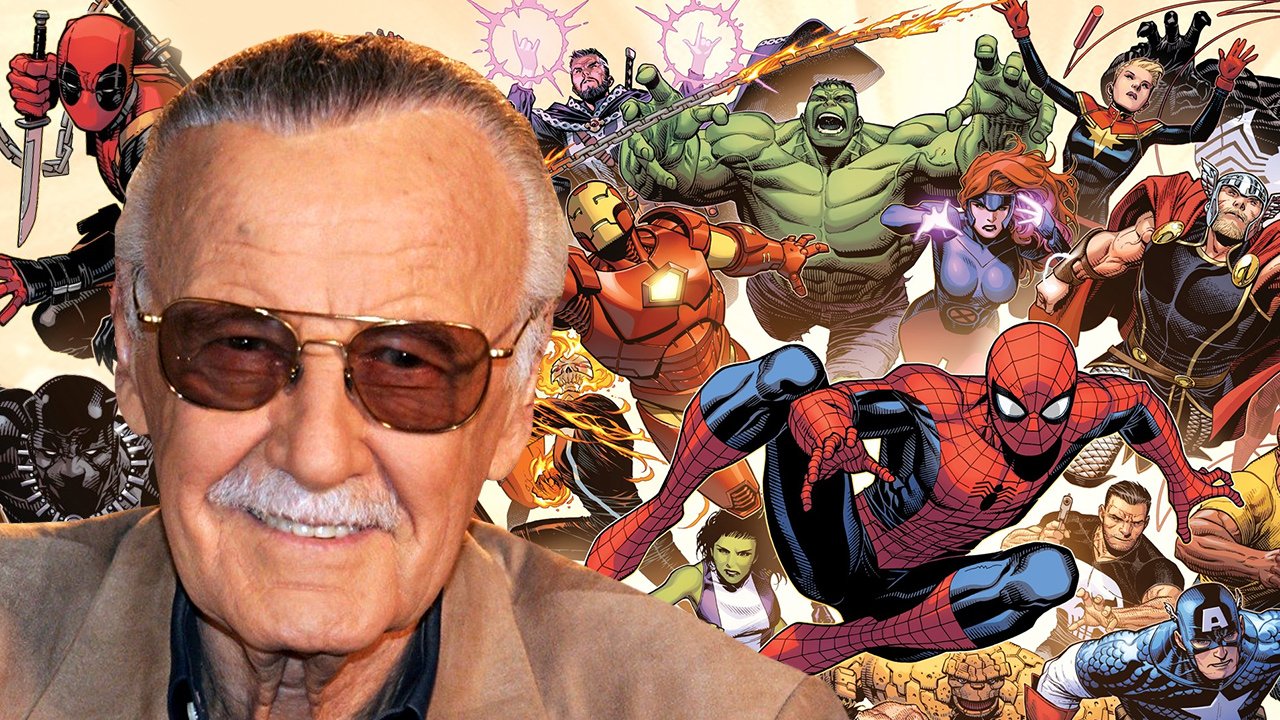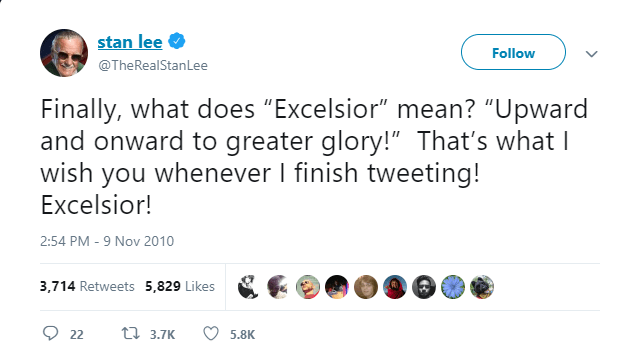Stan Lee’s Legacy and The Way In Which He Changed The World

Join the community on Reddit for the latest Marvel & DC news!
Stan Lee’s Legacy and The Way In Which He Changed The World
I’ve had a lot of time to think recently. Most of my thinking sessions have involved just one thought…Stan Lee. I didn’t personally know Stan Lee nor had I ever talked to him but I always found him to be a man that I looked up to.
Stan Lee did what Stan Lee did. Very few of us can say that.
He, along with a few others, carved out a path in comic books that was filled with small and large rocks and giant boulders. He created some of the most well-known characters in existence.
And on more than one occasion, successfully transitioned from role to role and embraced, not feared, each along the way.
He did what so few will do.
Stan Lee defined an entire genre.
Stan Lee’s Legacy – Characters
Comic books would not be where they are today if not for Stan Lee. Certainly, entire industries worth of credit cannot be placed on his shoulders but some of it can. Through dedication to his craft, he ushered in a new wave of heroes and villains. And did it with a smile on his face.
Just look at the likes of Spider-Man, the Fantastic Four, and the X-Men. Each changed the industry in a way all to themselves.
Different from other heroes and villains that had been created, Lee’s often weren’t born with their abilities. Instead, Lee’s creations were ordinary people put into extraordinary situations. His characters were no different than you or I.
Stan Lee understood one simple point. Many of the world’s greatest moments happen by chance. Stan Lee’s characters happened by chance.
- Peter Parker being bitten by a Radioactive Spider
- The Fantastic Four being bombarded with cosmic radiation
- The “X” gene that causes mutation in the X-Men
Think about it for a second.
It’s impossible to predict that you carry the “X” gene. It’s impossible to know that if you stand in an exact spot at a specific time, a radioactive spider would come down and bite you. And it’s impossible to know that a cosmic storm would cause radiation to penetrate your ship in the depths of space.

Lee’s characters stand the test of time not because they were special. No, his characters have stood the test of time because they weren’tspecial. They were normal people with normal problems. It’s been said many times in the past and I will say it again. His characters are relatable.
Spider-Man was a teenager with teenage problems. The Fantastic Four were a family with family problems. And the X-Men faced the same problems that we still face today. Racism. Discrimination. Bigotry.
But it wasn’t just his characters that cemented Stan Lee’s legacy.
Stan Lee’s Legacy – Adaptibility
Stan Lee’s legacy was built on his adaptability. Like a chameleon that can change its colors, Stan Lee successfully transitioned into whatever role was asked of him. And, like anyone, it had to start somewhere.
Stan Lee defined the notion of starting at the bottom and working ones way up.
But most of us know that. Most of us know that Stan Lee started as a simple inkwell filler. Most of us know that he spent his hours bringing the artists their lunches. And most of us know that, in today’s age, his role was laughable.
Those, however, aren’t the chameleon traits I refer to.
I refer to the ones that allowed him to turn from full-time comic book creator, responsible for characters like the Fantastic Four, the X-Men, Thor, Incredible Hulk, and Spider-Man, to full-time figurehead.
By the end of Stan Lee’s life, he wasn’t just the man responsible for the resurrection and creation of Marvel comics, he was Marvel comics. Stan Lee became so entrenched in popular culture that he was as recognizable as Spider-Man himself. His presence can be felt in every corner of the Marvel Universe. That’s undeniable.
Very few people ever get to this level.
How he got to this level was unheard of for his time. To do it, Stan Lee became the bridge between the audience reading his books and the creators making them. Stan Lee popularized the notion that the readers could openly chat with the creators.
“Stan’s Soapbox”. He did it through Stan’s Soapbox.
Stan Lee’s Legacy – Stan’s Soapbox
Stan’s Soapbox was a way that he, himself, could say what he needed to say to his readers, all the while making them feel like he was talking directly to them. It was a conversation between two parties that had never had an outlet to talk to one another before. In essence, Stan’s Soapbox was Twitter before Twitter existed.
He used the column to talk about upcoming promotions, ideas, stories, and even usher in a new age of comic book characters.
But that’s not why Stan’s Soapbox will be remembered.
Stan’s Soapbox was a way for Stan Lee to talk about the things that needed to be talked about. In 1969, in X-Men #56 Stan Lee explained something we all know … love is greater than hate.

“For many years we’ve been trying, in our own bumbling way, to illustrate that love is a far greater force, a far greater power than hate. Now we don’t mean you’re expected to go around like a pirouetting Pollyanna, tossing posies at everyone who passes by, but we do want to make a point. Let’s consider three men: Buddha, Christ, and Moses…mean of peace, whose thought and deeds have influenced countless millions throughout the ages — and whose presence still is felt in every corner of the earth. Buddha, Christ, and Moses…men of good will, men of tolerance, and especially men of love. Now, consider the practitioners of hate who have sullied the pages of history. Who still venerates their words? Where is homage still paid to their memory? What banners still are raised to their cause? The power of love — and the power of hate. Which is most truly enduring? When you tend to despair … let the answer sustain you.”
And it wasn’t just hate that Lee talked about. He discussed racism, bigotry, hidden messages within his books, and more. Stan Lee wasn’t afraid to speak his mind. Stan’s Soapbox was a platform created discuss the things that most are afraid to talk about.
Any why? Why would a comic book creator use comic books to talk about non-comic related topics?
Simple. Stan Lee believed in a better world.
Stan Lee’s Legacy – Words
He became as synonymous with words as Batman with “Bonk, Pow, Zap, and Bam.”
- ‘Nuff said
- Hang Loose
- Face Front
- Excelsior!
Excelsior!.
The one that would follow him for his entire life.
Excelsior!
With roots in Latin, Excelsior can be roughly translated as ‘ever upward’ or ‘still higher’. In a Twitter post, Lee defined it like this, “Upward and onward to greater glory! That’s what I wish you whenever I finish tweeting! Excelsior!”

But Excelsior!? Why, of all his expressions, did he stick with Excelsior!?
“I used to have a lot of expressions that I would end my comic book columns
Knowing what we know about Stan Lee, his word of choice makes sense. Upward and onward to greater glory.
Stan Lee’s Legacy
The most remarkable thing about Stan Lee isn’t his characters, his chameleon like abilities, or the way in which he practiced what he preached. The most remarkable thing about Stan Lee is the way in which he found his way into the hearts of so many in such a short period of time.
Stan Lee touched millions of lives, mine included, and without him, many would find themselves living a life of despair and heartache. Though his natural charisma and unwavering commitment to those around him, Stan Lee changed the world for the better. His larger than life persona will live on for many generations not because we want it to but because it needs to.
Stan Lee, as Ghandi professed, was the change he wanted to see in the world.
Cheers,
Joel
Liked this article? Join the community on Reddit for the latest Marvel & DC news!

